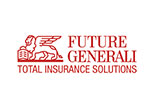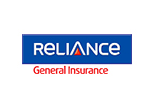Factors Affecting Car Insurance Premium in India
Factors Affecting Car Insurance Premium in India
Table of Contents
Car insurance plays a crucial role in vehicle ownership within India, offering indispensable financial security in the face of unexpected occurrences like accidents, theft, or natural calamities. One of the key considerations when purchasing car insurance is the premium, as it directly impacts the coverage and affordability of the policy. Understanding the factors influencing car insurance premiums is essential for every car owner to make informed decisions.

Various Factors Affecting Car Insurance Premium in India
The following factors mainly contribute to car insurance premiums in India:
- Vehicle Type and Model: The type and model of your car play a significant role in determining the insurance premium. High-end or luxury cars usually have higher premiums due to their expensive repair costs and spare parts. On the other hand, affordable and compact cars may have comparatively lower premiums. The cost of repairing or replacing expensive cars is higher, leading to increased financial liability for the insurance company. Therefore, they charge higher premiums to cover these potential costs.
- Age of the Vehicle: The car's age is another crucial factor in determining the insurance premium. This is because older cars generally have a lower market value, resulting in reduced financial risk for the insurer. As cars age, their depreciation value increases, reducing the potential claim amount. Consequently, the insurance premium for older vehicles tends to be lower.
- Insured Declared Value (IDV): The Insured Declared Value (IDV) is the maximum sum assured by the insurance company in case of total loss or theft of the insured vehicle. It is calculated based on the car's current market value. The higher it is, the higher the insurance premium. It represents the car's current value, and a higher IDV ensures better compensation in case of loss or damage. Consequently, the insurance premium is directly proportional to the IDV.
- Geographical Location: The location where the car is registered also affects the insurance premium. Urban areas are more prone to accidents, theft, and vandalism, leading to increased risks for the insurance company. Hence, car owners in these areas may be charged higher premiums.
- No Claim Bonus (NCB): A No Claim Bonus (NCB) is a reward provided by insurance companies to policyholders who have not made any claims during the policy term. Accumulating NCB can significantly reduce the insurance premium, encouraging safe driving behaviour. NCB is a way to incentivise policyholders for being responsible drivers. By not making claims, they demonstrate safe driving habits, which reduces risk for the insurer, leading to lower premiums.
- Deductible Amount: A deductible is an amount that the policyholder agrees to pay from their pocket before the insurance coverage kicks in. By choosing a higher deductible, the policyholder shares a greater portion of the financial burden in case of a claim. Consequently, the insurance company's liability reduces, resulting in a lower premium.
- Add-on Covers: Insurance companies offer various add-on covers, such as zero depreciation, roadside assistance, engine protection, etc. These additional covers enhance the policy coverage but may also increase the insurance premium. Add-on covers provide extended protection and additional benefits, making the policy more comprehensive. However, these extra features come at an added cost, increasing the overall premium.
- Policyholder's Age and Gender: The age and gender of the policyholder are also factors that influence the insurance premium. Younger drivers and male policyholders often face higher premiums due to higher perceived risks. Statistically, younger and male drivers are considered more likely to be involved in accidents, leading to higher insurance risks for the company.
- Driving Experience and Record: The policyholder's driving experience and record play a crucial role in determining the insurance premium. Those with a clean driving record and more experience tend to receive lower premiums as they are considered safer drivers. A good driving record indicates responsible driving habits, reducing the likelihood of making claims. Insurance companies reward such policyholders with lower premiums.
- Anti-Theft Devices and Safety Features: Installing anti-theft devices and safety features like airbags, ABS, and GPS trackers can reduce the risk of theft or accidents, leading to lower insurance premiums. Safety features and anti-theft devices enhance the vehicle's safety and decrease the chances of theft or severe accidents. As a result, the insurance company may offer lower premiums to policyholders with such safety measures.
Conclusion
Purchasing car insurance is a crucial step in safeguarding your vehicle and finances against unforeseen events. The premium you pay is influenced by several factors, including the type and model of your car, its age, geographical location, and your driving record. Additionally, factors like the No Claim Bonus, deductible amount, add-on covers, and safety features also play a significant role in determining the insurance premium. By understanding these factors and leveraging available discounts, car owners can secure the best coverage at an affordable premium.
FAQs:
- What is a No Claim Bonus (NCB), and how does it impact the insurance premium?
A No Claim Bonus (NCB) is a discount provided by insurance companies to policyholders who haven't made any claims during the policy term. It can significantly reduce the insurance premium, rewarding safe driving behaviour.
- Why do luxury cars have higher insurance premiums?
Luxury cars have higher insurance premiums due to their expensive repair costs and spare parts. The insurance company accounts for these higher costs when calculating the premium.
- How can I reduce my car insurance premium?
You can lower your car insurance premium by accumulating a No Claim Bonus, opting for a higher deductible, installing anti-theft devices, and choosing appropriate add-on covers.
- Does the location of vehicle registration affect the insurance premium?
Yes, the geographical location of the vehicle's registration can affect the insurance premium. Urban areas with higher traffic density and crime rates tend to have higher premiums compared to rural areas.
- What is Insured Declared Value (IDV) in car insurance?
The Insured Declared Value (IDV) is the maximum sum assured by the insurance company in case of total loss or theft of the insured vehicle. It represents the car's current market value and determines the insurance premium.














































